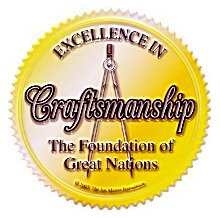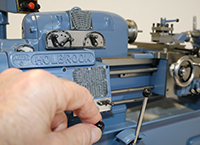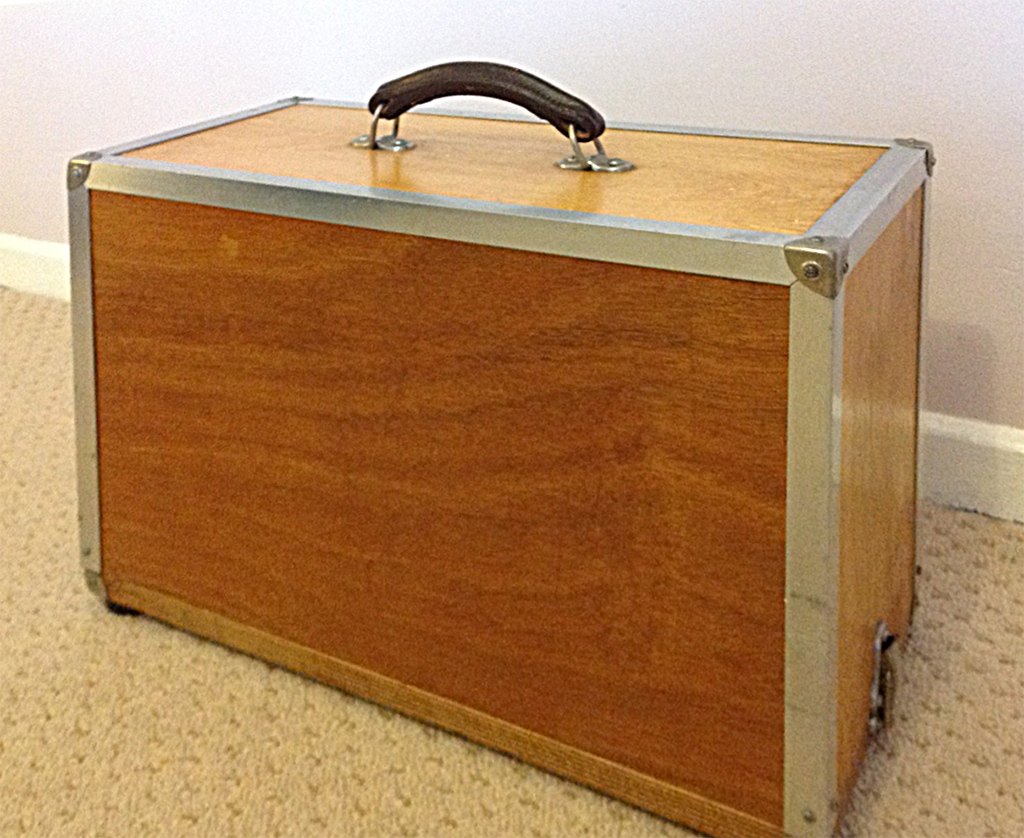The Internet Craftsmanship Museum Presents
Alfred
Mellows' Holbrook Lathe |
|||
|
Click on any image for a larger view
|
|||
| “The Cutting Edge of the civilized
mind is the hand of the craftsman.” —Dr. Bronowski |
|||
|
The above quote was mounted to the wall of the home workshop of Alfred R. Mellows of Romford, England. It gives us a clue into the thoughts of a man who devoted a good part of his life to the building of a model of a lathe produced by the factory where he worked as an apprentice machinist from 1939 to 1943.
|
|||
 |
|
||
|
Here is the list of technical features of the miniature Holbrook Model C lathe written by Mr. Mellows. |
|||
|
|
|
||
|
|
|
||
|
|||
|
Alfred Robert “Bob” Mellows - Precision Engineer 1922-2003 Biography by Malcolm Mellows
The photograph of Bob Mellows was taken during his service at the De-Havilland aircraft Co., in the late 1940's to mid-1950's at the time when the idea for the model was first conceived. Having shown an aptitude for engineering, in his teen years he was granted an apprenticeship at the Holbrook Machine Tool Co, which was located near to his home in London.
At the outbreak of World War Two, he volunteered for service in engineering with the Royal Navy, but was turned down, having been told that it was better to finish his apprenticeship first, then come back and re-apply to the military when qualified. Having completed his training as instructed, he returned to volunteer again, only to be told that the services no longer required so many engineers, and that he would better serve in industry. With that he was sent to the De-Havilland aircraft manufacturing plant, as that was also in London and within easy travelling distance of home. (Subject of course to the train not being hit by a German bomb, which was not impossible at the time ). Strangely enough, Goering, the head of the German Luftwaffe, was so worried about the awesome De-Havilland Mosquito fighter bomber, for which he had no equivalent, that maybe Dad did better service at DH than had he joined the forces.
Whilst working, he decided in his free time to make a small model of a Holbrook lathe, but was teased by his workmates because it was of no use as it did not function. With that, he took up the challenge and resolved to make a fully working scale model, which would be as if the real thing had been shrunk to a small scale, and decided that he would complete it however long it took him. In fact it took him the rest of his busy life to complete, working whenever he could.
On leaving De-Havilland in the mid 1950's, Dad worked for a variety of engineering firms, but was often consulted by a previous employer and asked to return and solve a machinery problem that could not be rectified by their current engineers. He was much admired and respected for his expertise, and his right arm and instinct was trusted more than a proper torque wrench.
His work on his own cars was something else. He would dispute the machined tolerances on factory fitted mechanical parts, and re-work them to his own satisfaction.
In retirement, he decided that the completion of his model would be his motivation to "get up on the morning, “and keep his mind active. He converted his garage into a workshop, bought himself a small lathe, plus a modelers' size vertical drilling machine, and various other gadgets, and set about finishing his model. Ironically, and tragically, he completed work just a few short weeks before he passed away in 2003, after telling me that all he had to do was make a few connections here and there.
During the latter years, Model Engineers' Workshop magazine followed the final build stages with articles in several issues, after having seen it at the model engineering exhibitions.
For myself as his only son, and inheritor of this unusual piece, I regret that I did not know much about the model, and what were Dad's intentions for it on completion, having myself not followed in his footsteps in engineering, and so I suppose my Dad assumed that I was not too interested, so he did not confide details to me to any great extent, much to my regret now. —Malcolm Mellows |
|||
|
|
|||
|
|
|||
|
|
|||
|
A silver plated beer tankard award by a local college for helping and advising students in his retirement. The inscription reads
Havering
College |
|
||
|
|
|||
|
Copyright 2019, The Joe
Martin Foundation for Exceptional Craftsmanship. All rights reserved. |
|||



 Controls
Controls